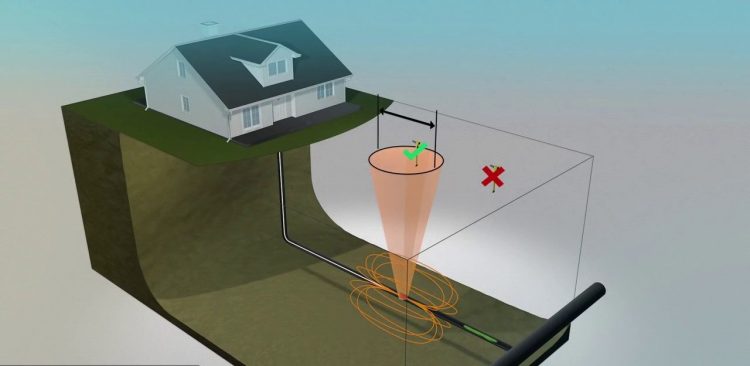What Does a Sonde Transmitter Do?
When drilling, the last thing you want is to smash through a pipe or get stuck. That’s why getting all the right tools and equipment, whether that’s safety equipment, excavators, or locators such as a sonde transmitter.
What Does a Sonde Transmitter Do?
But what exactly is a sonde transmitter? Let’s have a closer look at sonde transmitters to get a better understanding of what they do.
What Is a Sonde Transmitter?
A sonde transmitter sends signals from the bottom of the hole up through the drill string to the surface. The more accurate these transmissions are, the less likely they will hit utilities underground! Here, an operator or computer monitors them for accuracy.
Sondes come in many sizes and shapes, depending on how deep you need to go. Based on their size and features, they also vary in price. Some even include built-in lights and other accessories like depth gauges.
How Can I Use Sonde Transmitters?
Sonde transmitters are helpful when drilling new holes or reworking old ones. Depending on whether you’re doing horizontal or vertical drilling, they might also be beneficial while setting casing strings or installing utility lines.
If drilling across, you’ll only need a small sonde transmitter. These have enough power to send data back to the surface.
Yet, if you’re drilling down, you may need a more giant sonde transmitter. These can send data over longer distances, allowing you to track the progress of your borehole and determine its exact location.
What Types of Sonde Transmitters Are There?
Today’s most common type of sonde transmitter is a “transponder.” These devices work by transmitting radio waves down into the ground. In turn, these bounce off objects, such as rocks or water pipes, before returning to the surface, measuring the time between transmission and reception results in the distance.
There are two main types of transponders: active and passive. Active transponders contain batteries that provide energy to operate the device.
Transponders usually consist of a receiver unit and a battery pack. A typical transceiver has three main components: antennae, electronics, and display screen. Antennae pick up the signal from the sonde transmitter.
It then converts it to electrical energy. Electronics process the information received and display it on the screen.
Passive transponders don’t rely on battery power. But instead, they receive energy from the environment around them.
Why Should I Use a Sonde Transmitter?
There are several advantages to using a sonde transmitter rather than GPS technology. For example, GPS receivers can’t always pick up weak signals below the earth’s surface.
Besides, some areas lack cell phone coverage. So, if you want to know what lies beneath your feet, a sonde transmitter such as the Digitrak F2 could help you find out.
Another advantage is the real-time feedback about the direction of travel. With a traditional compass, you’d not know if you were heading north or south.
Not until after you’ve drilled a few hundred meters, anyway. But with a sonde transmitter, you get instant confirmation. Thus, you won’t waste precious hours trying to figure things out.
Finally, there are many situations where accurate depth measurement is beneficial. For instance, when laying pipe in deep wells, you often need to set casing at specific depths, and these casings must fit snugly against each other.
You need to measure their precise length. Using a sonde transmitter makes this task much more straightforward. You can see how far away you are from the next casing section.
What Drill Accessories Are Available?
When purchasing a drill rig, a sonde transmitter is one of the first items you should consider. The reason is simple—you cannot gauge your hole’s depth without one.
Remember that not all models offer the same features when choosing a transmitter. Some transmitters have a built-in depth meter, while others use external sensors like pressure gauges.
If you plan to drill many holes, you’ll also want to invest in a directional driller. This tool lets you steer the bit toward any point within 360 degrees by rotating the entire rig in 90-degree increments.
This feature might sound complicated, but once you try it, you’ll realize how easy it is!
What Other Pipe Locators Exist?
Pipe locator tools use various technologies to help determine whether pipes lie above ground level or underground. They’re instrumental when digging new trenches and repairing existing ones.
These devices work like a sonde transmitter, except they send out sound waves instead of radio frequencies. As such, the batteries last longer than those found inside a sonde transmitter.
The most common type of pipe locator uses ultrasonic pulses. These high-frequency vibrations cause objects to vibrate back and forth. If something moves along with them, then it will reflect the signal towards the source.
The second type of pipe locator sends out low-frequency waves. Unlike ultrasonics, LF waves don’t bounce off surfaces.
Thus, they penetrate deeper into the soil. Again, penetration depends upon the density of the material surrounding the object.
Use a Sonde Transmitter for Finding Pipes
So now you understand what a sonde transmitter is and how it works! With the right knowledge and equipment, you’ll have a stress-free digging experience.
Keep digging around and read our articles for more advice with grit!

















